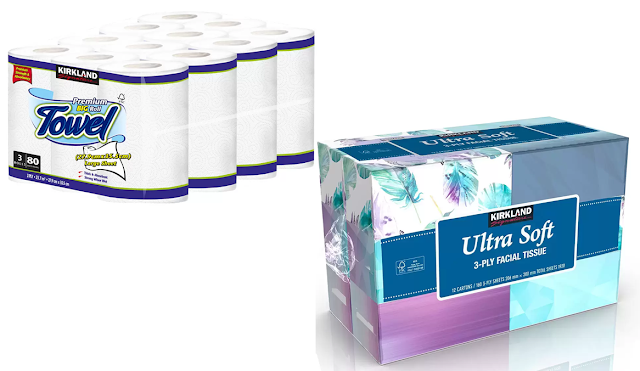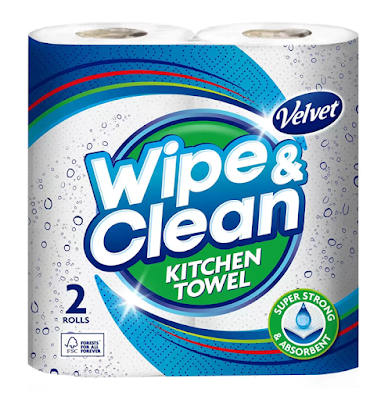As the toilet rolls are up and running I couldn't resist adding the rest of the loft stocks into the mix. The next two items are kitchen roll and facial tissues.
Following the same process described for toilet rolls; kitchen roll comes in a multipack, but this time a case has four packs of three rolls and we already have the storage location, shop and quantity units set up. Again, I think we'll have to set up a generic item (Parent product) as well as a specific one for the Kirkland brand rolls (Child product). So I gave it a name, Kitchen roll and a description; default storage location and shop, Loft/Costco; a min stock amount, 3 rolls; all the quantity units are Roll. Job done.
Now for the specific product, as previously, pulling images and descriptions off the Costco website, setting up case and pack barcodes and quantity conversions between them, buying in Cases and using in Packs.
But hang on, do we really want to track in packs of three? We only need a single towel roll in the kitchen at once, as they don't get used up that frequently. So perhaps tracking at the level of individual rolls would be better, but now we don't have a barcode for that. Hmm.
A trip to the loft uncovered a ragbag of different, partly used packs (who said I needed a stock control app?). There were two different 12-roll packs (one 4x3-roll pack and one 12x1-roll pack) but both with the same barcode and Costco Art#. I think that at some point Costco have updated their product and reused the same barcode and product IDs, but that is OK as they both contain 12 rolls. So that gives us a single barcode for the cases.
I have lots of 3-roll packs with a barcode and one single roll pack but with a different barcode. So I can assign the barcode on the single roll as a one roll consume barcode, I just have to make sure that the single roll pack doesn't get used. Also, I found another 2-pack from an earlier purchase of which I had a single roll left (this was from a case of 10x 2-packs apparently). So this had to be set up as well…
OK, everything is sorted. However at this point it clicked that someone was going to find that single pack and the attached barcode would be lost. So I started thinking a bit about the barcodes. If I printed out the single pack barcode, I could leave it near the loft stock and then every time one was used from the 3-packs I could consume it using this barcode. This would also mean that someone using the solitary single pack would no longer be an issue. A nice, simple solution.
So, with the stock items in place, quantity conversions sorted and barcodes assigned, it was time to check the inventory and make sure it matched what is present in the loft. Once that was done everything was sorted out and it was a fairly quick and painless process all considering.
Onto the second item, facial tissues.
This time I decided that there was no need to put up a Parent product, so the set-up was even more straightforward. As it only required the addition of a new quantity unit, Box, but other than that it was just turning the handle.
P.S.
The barcode thing spurred a bit of rumination. Would it be useful to have a sheet with all the barcodes on it that can be referred to?
It's probably not really that useful for the three things in the loft. But for multiple cupboards full of stuff, sometimes it might be easier to use a cheat sheet rather than the individual items. Also for damaged/dirty/uncooperative barcodes we can then just default to a clean "proof" barcode when scanning problems occur.
Unfortunately, Grocy doesn't convert user-entered barcodes into images, so we can't use Grocy as a repository for them. But this would be quite a nice feature to have. I imagine that there are barcode generators out there that can do this.
So, how should this library be maintained? I thought about a Powerpoint file at first but this would get unwieldy quickly. Really this is a database issue. Ideally one interfaced with the Grocy database so there would be no need to re-input names, descriptions, quantities, etc, that have already been entered; thus preventing the databases getting out of sync.
However, just to start off with, we can probably maintain a library in a Word doc.



Comments
Post a Comment